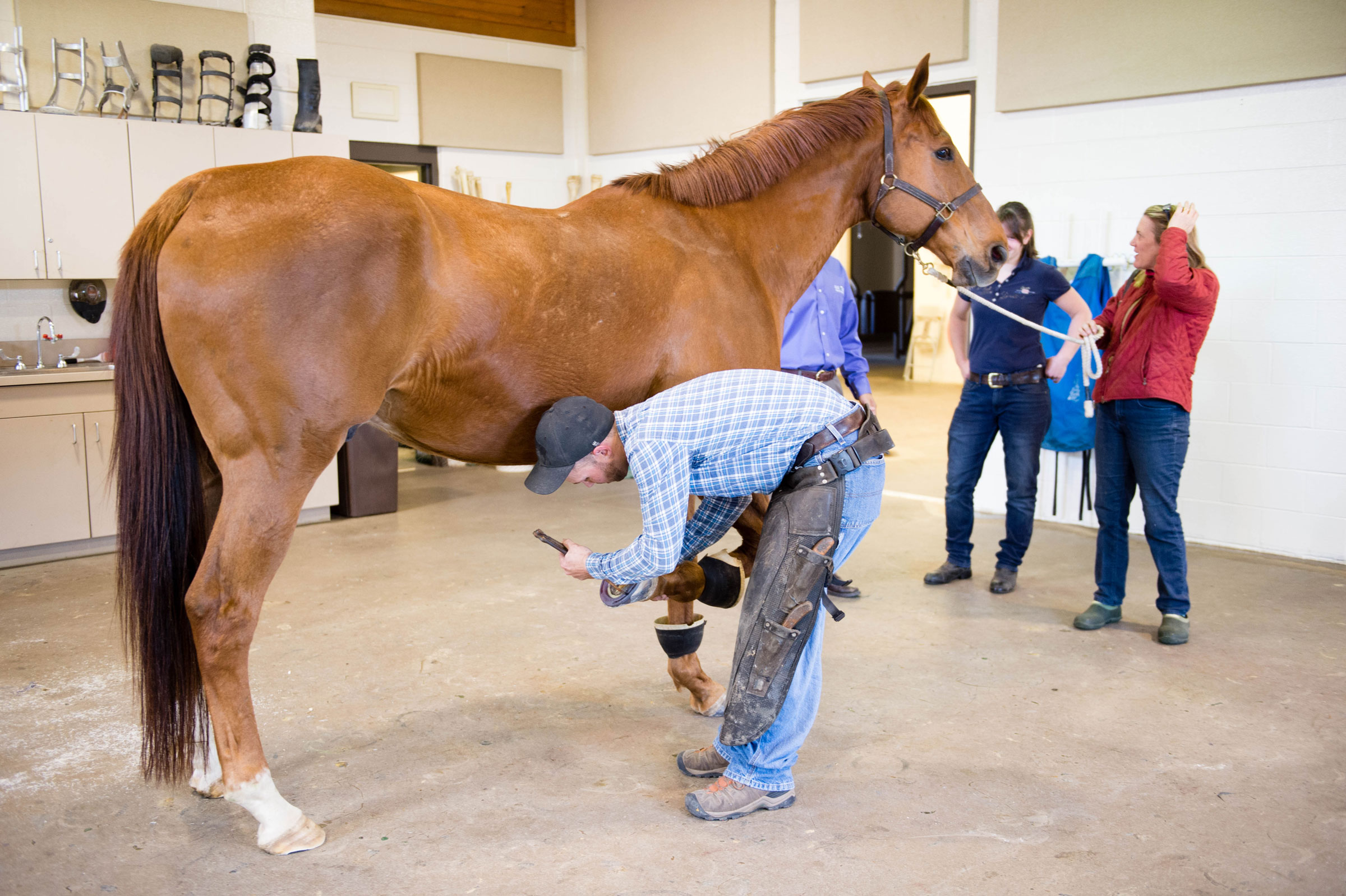
There are only a few things that cause a horse to be acutely unwilling to put weight on a leg—a limb fracture, an infected joint or tendon sheath, foreign body puncture in a hoof, or a hoof abscess. With a hoof abscess, a horse might not want to touch the limb to the ground but might for a brief moment. Pressure from swelling within the hoof makes it extremely painful to put full weight on the foot.
A horse with a hoof abscess can develop acute lameness despite no history or sign of an external injury. When checking the digital pulses, the pulses of the affected lame limb are often bounding. If you rap lightly on the hoof wall with a hammer or a rock, the horse with a foot abscess is likely to pull the limb away when you tap over or around the internal swelling. A hoof with an abscess doesn’t always feel warmer than the normal foot, but it’s worth checking.
Many abscesses that haven’t found their way to the surface might respond to hoof testers placed directly across the sole or hoof wall in the specific area of pain. Some smoldering abscesses eventually make their way to the coronary band or heel bulb to break out and drain. Initially, finger pressure over these soft tissues will cause the horse to react and withdraw the limb. Poultice packing over the coronet or heel bulb or Epsom salt soaks soften the tissues to allow an easier “path of least resistance” for the abscess tract to reach the surface and drain, relieving the pressure and pain. In some instances, swelling related to a hoof abscess proceeds into the pastern and the rear tendons of the cannon area—this swelling is often confused with a tendon injury.
Hoof tester identification of an abscess beneath the sole (subsolar) helps with resolution—the area of sole pain is pared out with a hoof knife to allow drainage of pus. Most pus of hoof abscesses is dark grey and might have a malodor due to anaerobic bacterial growth. Drainage of an abscess helps to resolve the problem by relieving pressure. Systemic antibiotics are rarely necessary in those cases.


